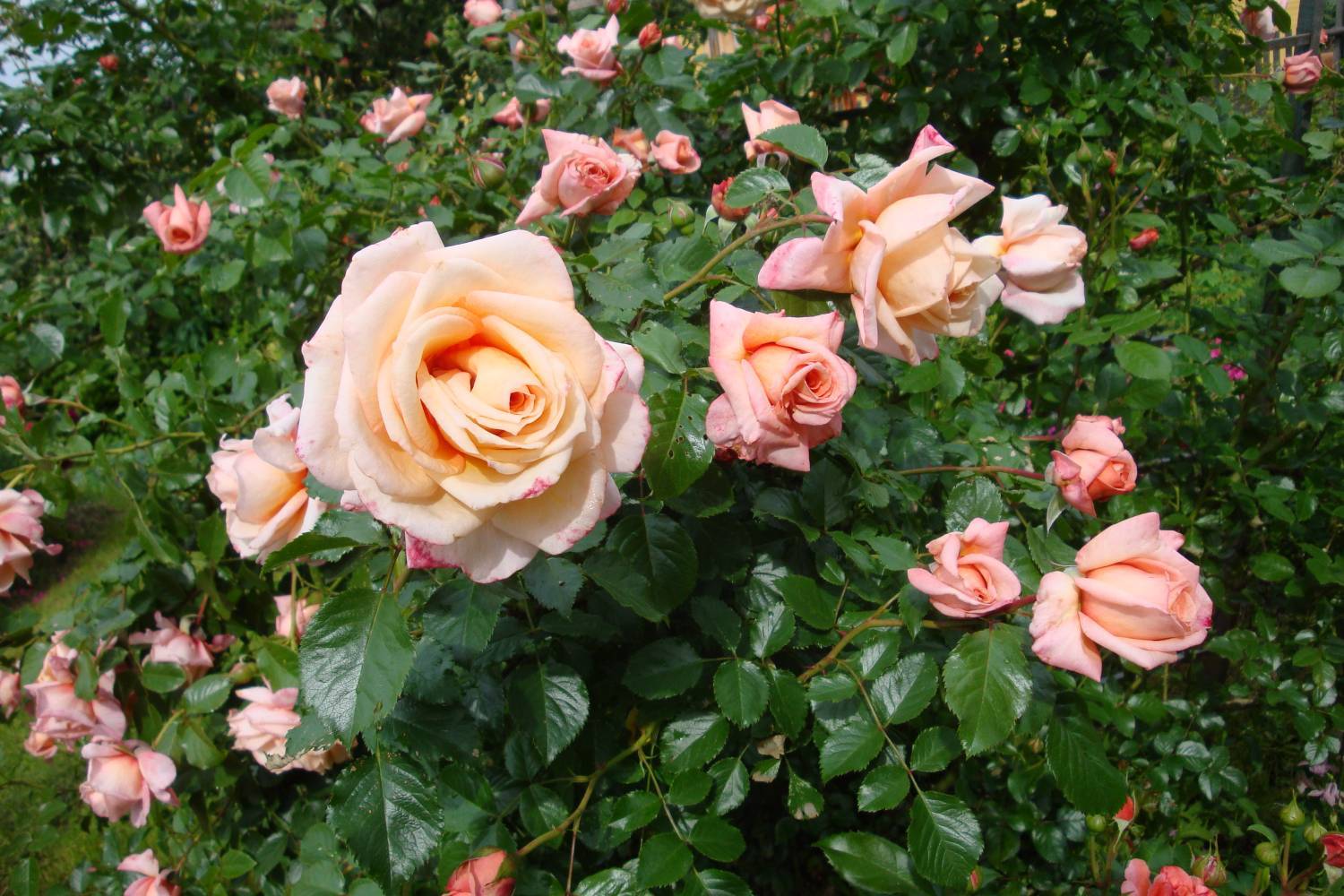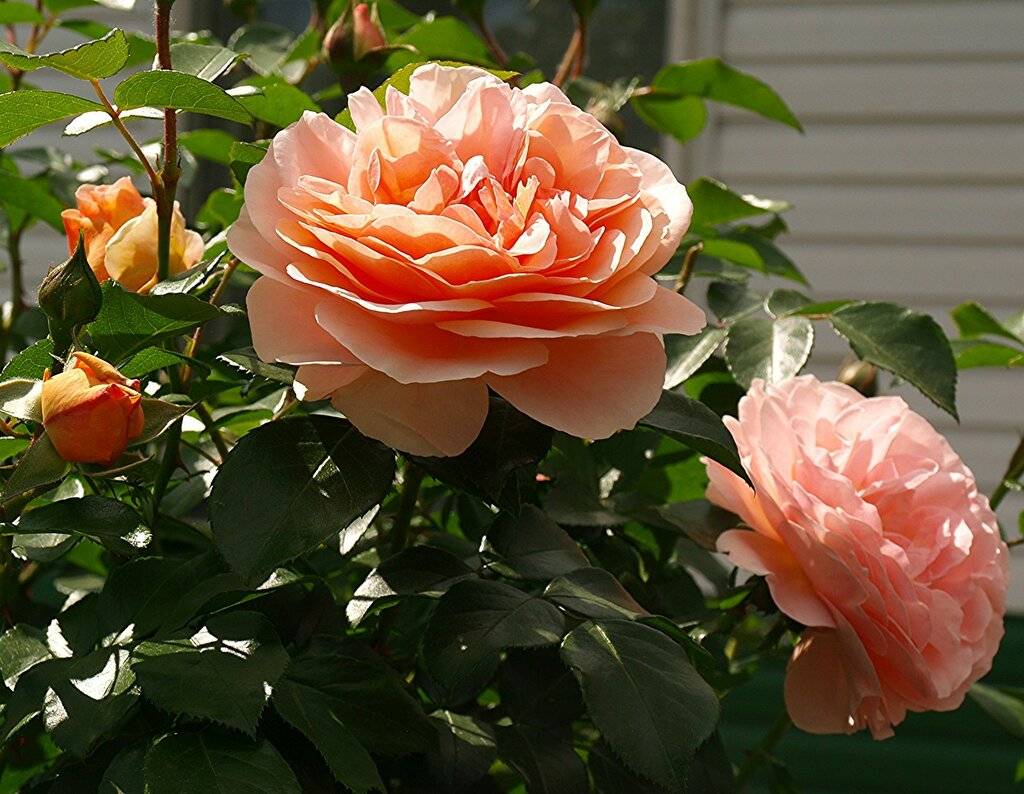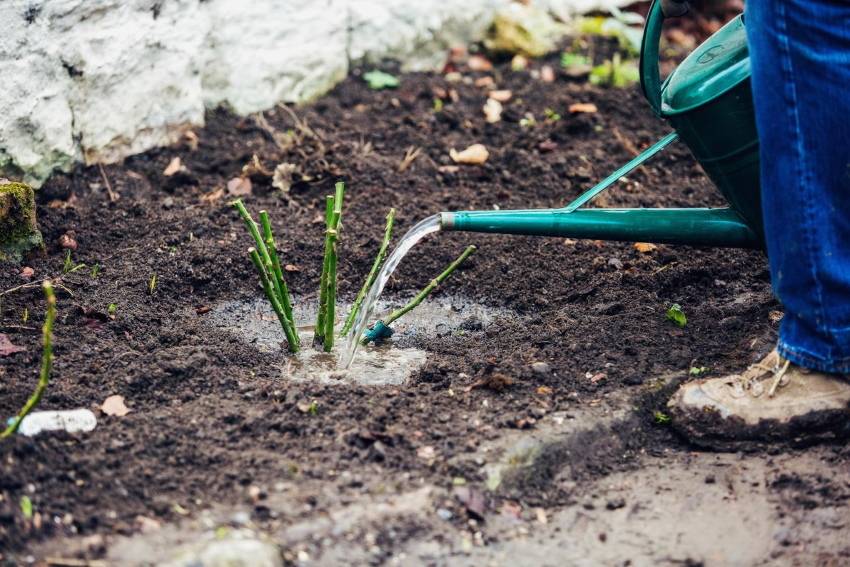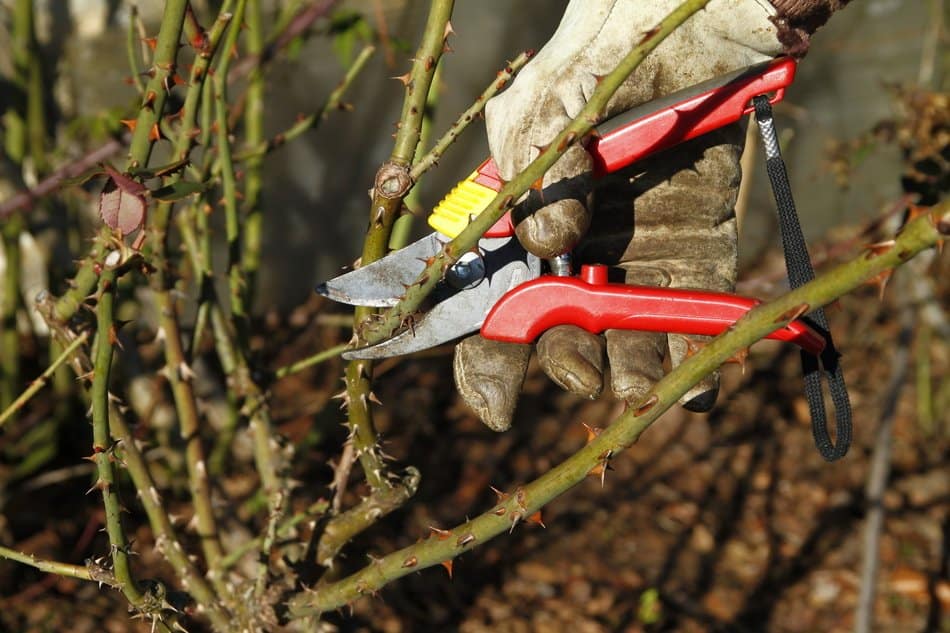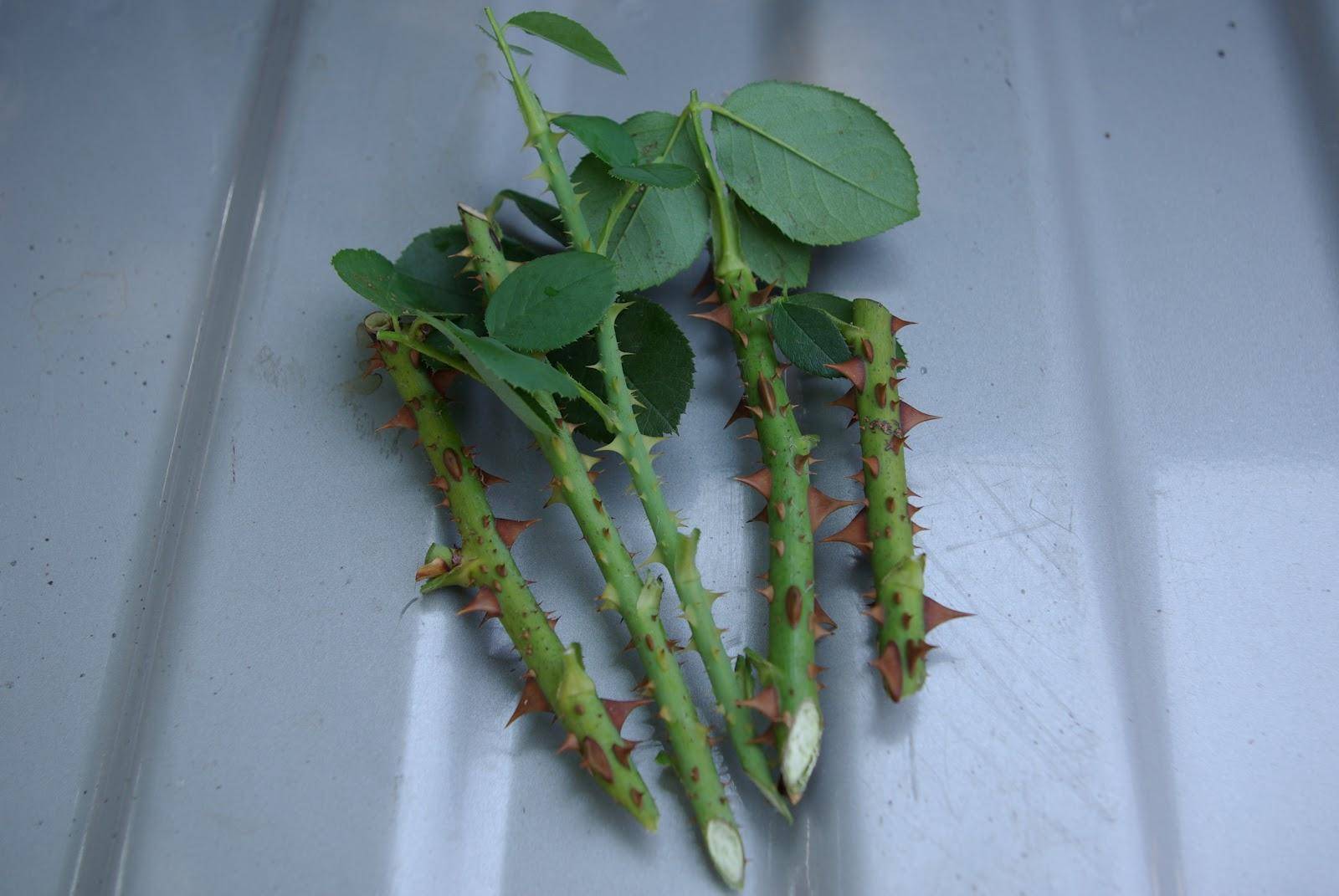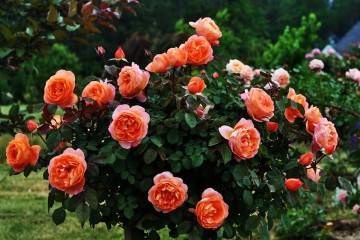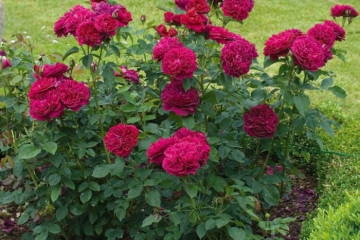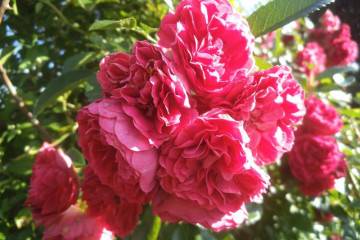Rose Barock - description of the German variety
Content:
The beautiful climbing rose variety Claymber Barock is referred to as the so-called nostalgic. When looking at a bush covered with large flowers, one involuntarily recalls the canvases of German and French artists of the 18th century.
Rose Barock - what is this variety
The variety was bred in 1999 in the German nursery "Tantau" and became one of the pearls of the company's catalog.
The Baroque style in art is a synonym for pompous splendor and luxury, which fully reflects the impression that a blossoming Baroque rosebud produces upon first acquaintance.
Brief description and characteristics
The Baroque variety belongs to climber, that is, to large-flowered, re-flowering climbing roses. Each of the stems bears 5-10 flowers. The rim has the shape of a bowl with 65-75 petals, in which the edges are bent outward as they are completely dissolved. Corolla diameter is no more than 12 cm. Flowering begins in June, followed by a pause of 6-8 weeks, and then the buds are formed again.
The most impressive is the iridescent color scheme of the petals. They can be pink, apricot (salmon), cream, yellowish. The tone changes depending on the humidity of the air, temperature, illumination. The colder it is, the closer the color is to pink, and in the heat the petals turn yellowish and apricot.
Shoots grow in length up to 1.5-2 m. The bush is not very spreading, in width it takes no more than 1 m. The number of thorns is moderate. The leaves have a glossy sheen and rich green color. Buds are formed along the entire length of the shoot, forming clusters of 3-5 pcs.
Advantages and disadvantages of the variety
Among the advantages of the Baroque climbing rose:
- high resistance of flowers to rain;
- resistance to black spot and powdery mildew;
- winter hardiness up to −20 ° С;
- suitable for growing in containers;
- delicate aroma.
Of the shortcomings, a fairly long pause between flowering is common for all climbers.
Use in landscape design
Climbing roses are most in demand in small gardens, since they require significantly less space than bush varieties. Scourges can be wrapped around any support: gazebos, arches, fences, pergolas, etc.
Growing a flower: how to plant it in open ground
It is not difficult to plant the Barok variety, it is enough to purchase high-quality planting material in the nursery. This point should be given special attention, because German roses are an expensive and delicate product that cannot be found on the regular market.
Seedlings of 2 years of age are on sale, as a rule, with a closed root system (in a container or a sealed bag). Shoots up to 50 cm long are embedded with low melting point wax to prevent drying out. Since the optimal time for planting is spring, the buds should not start growing yet.
What time is the boarding
Planting can be done in spring and autumn. In autumn, it is performed 3 weeks before the expected frost. In this case, flowering will occur next year at the beginning of summer, exactly on schedule.
When planting in spring, the first flowering may not be, then the bush will bloom for the first time only at the end of summer. Spring planting is carried out when the soil warms up to 10-12 ° C. Usually this is the first half of May.
Seat selection
The planting site must be set aside in the sun from the south side of the house; for flowering, at least 8 hours of bright light are required. Penumbra is permissible, but not dense. At least 1 m is left between the bushes so that there is enough space, but not to create thickening, which is destructive for the crown.
Planting holes are dug on a small hill to avoid stagnation of moisture at the roots on rainy days and in spring when the snow melts. A slightly acidic soil is suitable for a rose. If the soil on the site is heavy, loamy, then it is changed to a suitable one, purchasing from a garden store.
How to prepare the soil and flower for planting
The seedlings are examined before planting, paying attention to any signs of disease. Rot, dark spots are unacceptable. A spoiled seedling will not grow, but will die in the very near future.
Before planting (1-2 days), the soil is carefully dug up to a depth of 50 cm, and then they dig planting holes with a depth slightly greater than the height of the root system of the seedling. Broken brick or expanded clay is poured at the bottom for drainage. Then a bucket of water (10-12 liters) is poured into each pit.
Planting procedure step by step
The Baroque is planted in the following order:
- The stems are cut, leaving shoots up to 25 cm long.
- The coating is removed from the roots.
- The seedling is lowered into the planting hole, aligning the growing point flush with the soil level or slightly lower.
- Sprinkle the roots with soil, to which humus is added, 1-2 glasses of wood ash, 30-40 g of superphosphate.
- Water abundantly, and then mulch the soil around the bush.
Plant care
In everyday care, climbing roses practically do not cause trouble for owners, for which gardeners especially appreciate them. The main attention is paid in spring, during flowering and in autumn, preparing bushes for wintering.
Watering rules and humidity
Roses equally dislike waterlogging and drought. Watering is performed every week, pouring 10-12 liters under each plant. The water is used warm and settled.
Top dressing and soil quality
In order for the rose to delight with abundant flowering every year, it needs to be fertilized regularly. In the spring, nitrogen fertilizers are applied to stimulate the growth of green mass. In the summer, after the first wave of flowering, a complex mineral fertilizer is applied, for example, Agricola-Rosa. In the fall, 2 weeks before frost, they are fed with phosphorus-potassium fertilizer or they dig up the soil, introducing compost into it.
Pruning and replanting
The goal of each pruning is to leave only strong and healthy branches on the bush. If the shoots are too long, then they are shortened to give the desired shape to the crown (especially important for planting near fences). The most important pruning is performed in the spring, when all the areas frostbitten and dried up during the winter are cut off. The ends of the shoots are shortened to the forks, leaving 2-3 buds, no more.
In the summer, after the first wave of flowering, all wilted buds are cut off. This will prevent the plant from spending energy on ripening the seeds. In the fall, too long branches and shoots with traces of diseases are cut off.
Features of wintering a flower
Depending on the age of the bush, it is left to winter on a support (the shoots are lignified and do not bend), or they are removed and bent to the ground. In the first case, directly on the support, the shoots are wrapped with a covering material, and in the second, arcs are installed over the shoots, on top of which the agricultural canvas is pulled.
Blooming rose
If the plant has received a sufficient amount of nutrients, moisture and sun, then its lush and timely flowering will delight every year.
A period of activity and rest
The first wave of flowering usually occurs in the first ten days of June and lasts about 3 weeks. Then there is a pause of 6-8 weeks, after which a wave starts, which is usually more abundant and longer than the first (up to 4 weeks).
Care during and after flowering
During flowering, climbing roses respond positively to feeding with a solution of wood ash, humate, and complex mineral fertilizer. It is necessary to remove wilted buds in time and make sure that the soil is always moderately moist.
After flowering, they perform sanitary pruning, examine the bushes so as not to miss the symptoms of diseases or pests. If necessary, spray with fungicides or insecticides.
What to do if it does not bloom
The lack of flowers on the bush is a symptom of the extreme depletion of the plant, it needs to be fed. If, after planting, the bush has never bloomed, then it needs to be transplanted to a more illuminated place, and for filling, use a store-bought soil of neutral acidity.
Flower propagation
Rosa Baroque is propagated by cuttings, grafts and layering. Vaccinations are performed on rosehip bushes (2-3 years old), which makes it possible to obtain significantly more frost-resistant plants.
Cuttings are taken at the end of May (before flowering). The cuttings can be bent to the soil for rooting from May to the end of June. The resulting young bush is planted in a new place only next spring.
The stalk is harvested from the end shoots with 2-3 pairs of leaves. The crown is immediately cut off. The stalk is dropped in the garden bed, necessarily covering it with a cut plastic bottle on top to maintain high humidity.
Diseases, pests and ways to control them
Fungal diseases are the main scourge of roses. To avoid their appearance, the bushes are not planted too closely. The appearance of powdery mildew is often preceded by an excessive application of nitrogen, therefore it is used strictly in the recommended dosage. In the spring, immediately after the dissolution of the buds, the bushes are treated with Bordeaux liquid or copper sulfate. Against aphids and other pests of roses, insecticides of a wide spectrum of action are used: aktara, spark-M, etc.
Planting Baroque climbing roses will allow you to add a note of real luxury to your garden. Their delicate beauty will turn any corner of the personal plot into a cozy resting place for the whole family.
